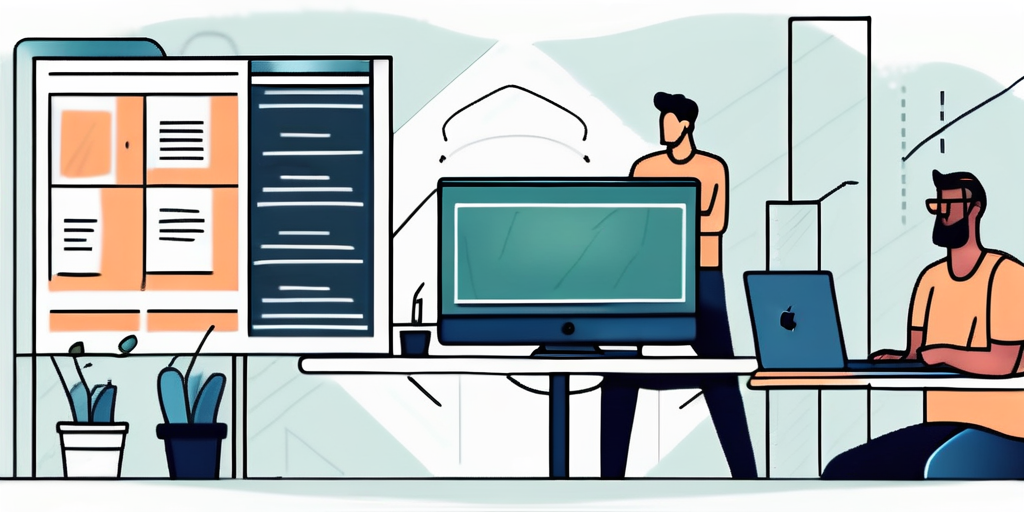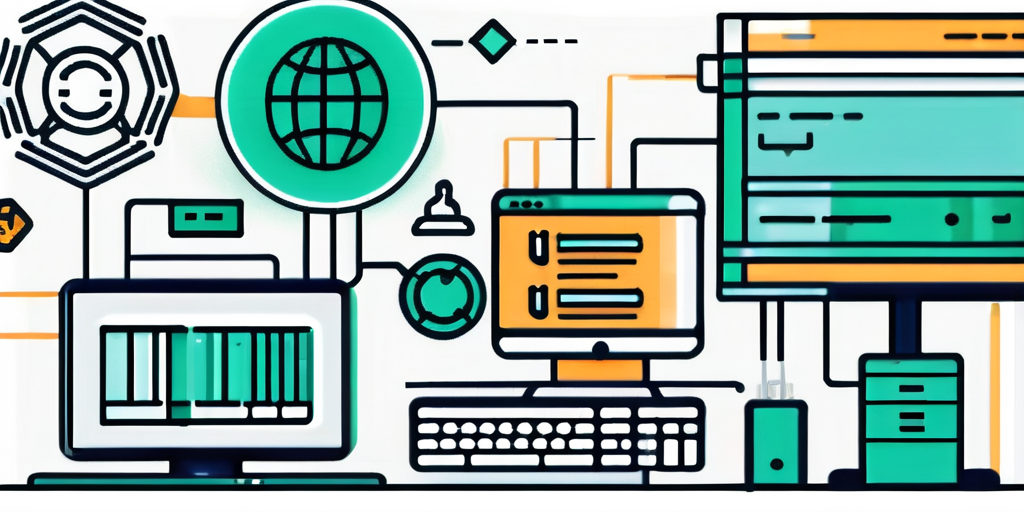Front End, Back End, and Full Stack Development are the three key areas in the field of software development. Each area encompasses a different set of skills, responsibilities, and tools. To gain a better understanding of these concepts, it’s important to define each term and delve into the specifics of their roles and interplay. Whether you’re an aspiring developer or just curious about the different facets of software development, this article will provide you with a comprehensive overview.
Defining Key Terms: Front End, Back End, and Full Stack

What is Front End Development?
Front End Development is primarily concerned with the parts of a website or application that users interact with directly. It involves the creation and design of the user interface, user experience, and visual elements. Front End Developers work with HTML, CSS, and JavaScript to build the client-side of a website or application. They focus on creating intuitive and responsive interfaces that engage users and enhance their experience.
Front End Development also involves ensuring compatibility across different browsers and devices. This includes optimizing the performance and responsiveness of the website or application. Front End Developers need to have an eye for design and be familiar with modern design frameworks and libraries.
For example, when developing a responsive website, a Front End Developer may use media queries to adjust the layout and design based on the screen size of the device being used. They may also utilize JavaScript libraries like React or Angular to create interactive components that enhance the user experience.
What is Back End Development?
Back End Development refers to the server-side of software development. It involves the creation and management of databases, servers, and application logic that power websites and applications. Back End Developers work with programming languages such as Python, Ruby, or Java to handle the server-side code.
Back End Development focuses on storing and retrieving data, handling user authentication, and managing server-side operations. They need to have a strong understanding of algorithms, data structures, and web frameworks to effectively build and maintain the back end of a website or application.
For example, when developing a web application that requires user authentication, a Back End Developer may use a database to store user credentials and implement secure login and registration processes. They may also utilize frameworks like Django or Ruby on Rails to handle routing and server-side operations.

What is Full Stack Development?
Full Stack Development combines both Front End and Back End Development skills. A Full Stack Developer is proficient in both building the client-side and server-side of a website or application. They have a holistic understanding of how the different components interact and work together to create a fully functional software product.
A Full Stack Developer can handle both the user interface and user experience aspects as well as the server-side logic and database management. This versatility allows Full Stack Developers to take on a broader range of projects and have more control over the entire development process.
For example, when developing an e-commerce website, a Full Stack Developer may handle the creation of the product listing pages and shopping cart functionality on the front end, as well as the server-side code that handles order processing and inventory management on the back end. They may also integrate payment gateways and implement security measures to ensure a safe and seamless shopping experience for users.
The Role and Responsibilities of Each Developer
Front End Developer Responsibilities
Front End Developers are responsible for the visual and interactive aspects of a website or application. They collaborate with designers to implement the user interface and create an engaging user experience. Additionally, they ensure that the front end of the website or application is optimized for performance and responsiveness.

Front End Developers need to be proficient in HTML, CSS, and JavaScript. They also have to stay updated with the latest design trends and have a good understanding of design frameworks and libraries. Communication skills are also important for Front End Developers, as they often work closely with designers and back end developers.
Back End Developer Responsibilities
Back End Developers focus on the server-side of a website or application. They are responsible for handling data storage, application logic, and server management. Back End Developers work closely with front end developers to ensure that the server-side operations are seamless and efficient.
Back End Developers need to have a strong understanding of programming languages and web frameworks. They must be proficient in database management and have knowledge of security best practices to protect sensitive user information. Analytical thinking and problem-solving skills are crucial for Back End Developers to build robust and scalable back end systems.
Full Stack Developer Responsibilities
Full Stack Developers have the combined responsibilities of both Front End and Back End Developers. They handle the entire software development process, from conceptualization to deployment. Full Stack Developers have the flexibility to switch between front end and back end tasks as needed.
In addition to the skills required for Front End and Back End Development, Full Stack Developers need strong project management and communication skills. They often have to work on multiple aspects of a project simultaneously, and effective communication with team members and stakeholders is crucial to ensure successful outcomes.
The Tools and Languages Used in Each Area
Tools and Languages for Front End Development
Front End Developers use a variety of tools and languages to create visually appealing and interactive interfaces. HTML is used to structure the content, while CSS is used to define the style and layout. JavaScript is the programming language used to add interactivity and functionality to the front end.

Front End Developers also utilize design frameworks and libraries such as Bootstrap or Material-UI. These frameworks provide pre-designed components and styles that can be easily incorporated into a project, saving time and effort.
For testing and debugging, Front End Developers use browser developer tools and automated testing frameworks like Jest or Jasmine.
Tools and Languages for Back End Development
Back End Developers have a wide range of tools and languages at their disposal to build and maintain server-side applications. Programming languages such as Python, Ruby, Java, or Node.js are commonly used to write the server-side code.
Back End Developers work with databases to store and retrieve data. Popular database management systems include MySQL, PostgreSQL, and MongoDB. Frameworks like Django, Ruby on Rails, or Express.js provide a structured way to handle server-side logic and facilitate development.
Additional tools such as IDEs (Integrated Development Environments) like Visual Studio Code or PyCharm, as well as source control systems like Git, are essential for efficient and collaborative development.
Tools and Languages for Full Stack Development
Full Stack Developers utilize a combination of tools and languages from both Front End and Back End Development. They need to be proficient in HTML, CSS, JavaScript, as well as a server-side programming language like Python, Ruby, or JavaScript (Node.js).
Full Stack Developers often work with web frameworks that support both front end and back end development, such as Django, Ruby on Rails, or MEAN Stack (MongoDB, Express.js, Angular, Node.js). These frameworks provide a cohesive environment for developing full stack applications.
In addition to the above-mentioned tools and languages, Full Stack Developers also benefit from using integrated development environments (IDEs) and project management tools. These tools help streamline the development process and ensure efficient collaboration between team members.
The Interplay Between Front End, Back End, and Full Stack Development
How Front End and Back End Work Together
Front End and Back End Development are often interdependent and rely on each other to create a fully functional website or application. While Front End Developers focus on the user interface and overall user experience, Back End Developers handle the server-side operations and data management.
The collaboration between these two areas is crucial to ensure seamless communication between the client-side and server-side. APIs (Application Programming Interfaces) are commonly used to establish this communication. Front End Developers make requests to the server via APIs, and Back End Developers respond with the required data or perform the necessary actions.
Front End and Back End Developers often work closely together, collaborating on project requirements and troubleshooting issues that arise during development. Effective communication and understanding of each other’s roles are key to creating successful and cohesive software products.
The Advantage of Full Stack Development
Full Stack Development offers several advantages, as it allows developers to have a comprehensive understanding of the entire development process. They have the ability to work independently on both front end and back end tasks, providing more flexibility and autonomy.
Full Stack Developers can handle the entire software development cycle, from prototyping to deployment. This versatility enables them to develop prototypes quickly, test and iterate on their ideas, and deploy fully functional applications or websites.
In addition, Full Stack Developers can bridge any communication gaps that may exist between front end and back end developers. Their expertise in both areas allows for smoother collaboration and more efficient project management.
Conclusion
Understanding the difference between Front End, Back End, and Full Stack Development is essential for anyone interested in the field of software development. Each area has its specific skills, responsibilities, and tools. Whether you choose to specialize in one area or become a Full Stack Developer, having a solid foundation in the concepts discussed in this article will greatly benefit your career.

Front End Developers bring the user interface to life, Back End Developers handle the server-side operations, and Full Stack Developers bridge the gap between the two. With the right combination of skills, tools, and an understanding of how these areas interact, you can embark on a successful career in software development.